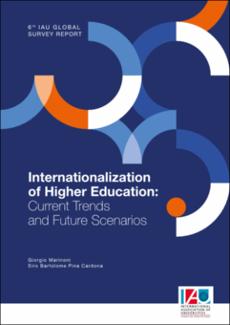Internationalization Of Higher Education: Current Trends And Future Scenarios

View/
Date
2024Author
Marinoni, Giorgio
Pina Cardona, Siro Bartolome
Metadata
Show full item recordAbstract
The 6th IAU Global Survey on the Internationalization of Higher Education sheds some light on the most important trends and evolutions in internationalization around the world and provides for some interesting comparisons between private and public HEIs and between HEIs across different regions. It also provides insights on the evolution of certain trends over time by
comparing the results with previous editions of the survey whenever this is possible. It is worth mentioning that there is an increasing level of importance paid to internationalization by academic leaders around the world, and especially so at institutions that previously considered internationalization of low importance. This result reverses a worrying trend of growing inequality among HEIs that was highlighted in the 5th edition. We should also mention that HEIs around the world see increased international cooperation and capacity building as the main benefit of internationalization, a trend already highlighted by the 5th global survey and confirmed by this 6th edition. Although in terms of priority there is still a focus on student mobility, international cooperation and capacity building are the activities that have increased the most over the last five years, showing a move towards a convergence between expected benefits and activities to achieve them. The survey also shows that the world is diverse and that for some aspects of internationalization, there is no common denominator at the global level, as exemplified for instance by the great variety of risks and challenges/obstacles. In some cases, the regional analysis helps explain this great variety, for instance with the clear identification of “Brain drain” as the most important risk in Sub-Saharan Africa, but in other cases diversity persists also at the regional level, demonstrating that multiple factors other than the geographic location of institutions are important in defining trends.
The responses also underline the widespread nature of internationalization as a strategic process, but at the same time they highlight a number of limitations, especially in terms of funding. They also show how internationalization is still a top-down approach mainly steered by academic leadership and the internationalization office, and call for reflection on the possible
risks of lack of engagement from the rest of the academic community that such an approach implies. They also show that there is still a geographic imbalance at the global level, with regions in the Global North (Europe and North America) still attracting the most attention, while South-South cooperation, besides intra-regional, is still not considered a priority. The survey
also confirms a tendency towards regionalisation in some regions but not in others, and the specificity of North America as a region, which more often than not, presents divergent results from other regions.
Collections
- Estudios [288]
